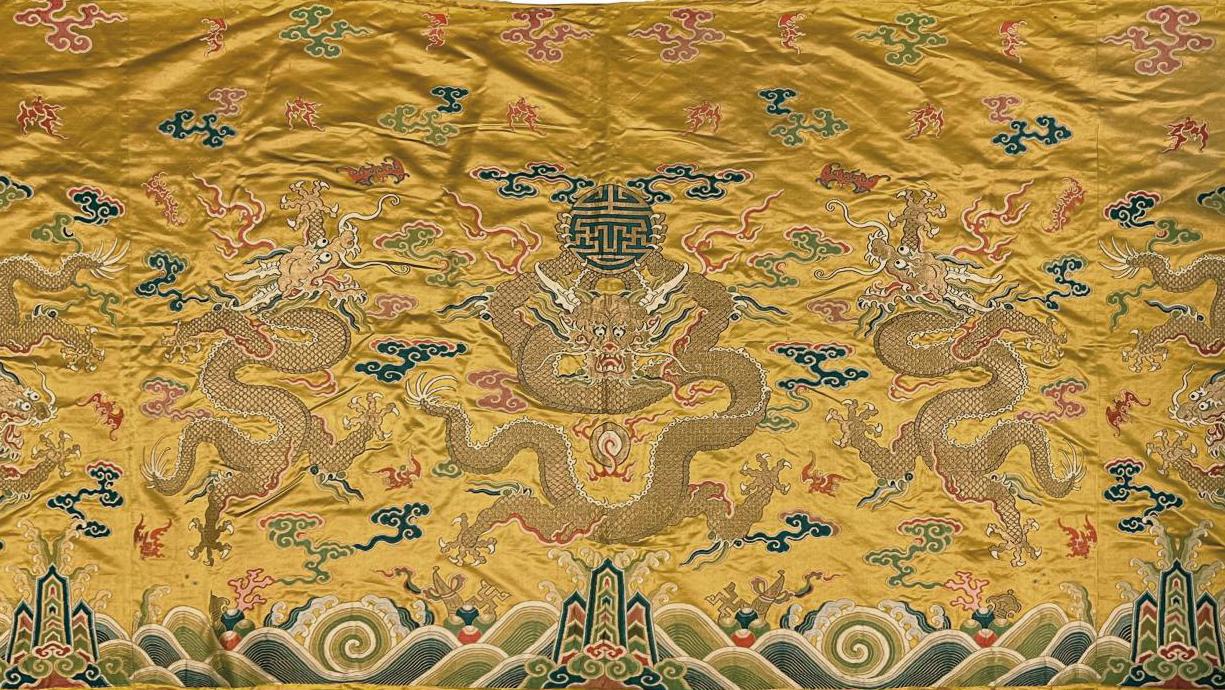China has stitched together an embroidery tradition stretching back to at least the fifth century BCE. Silk production helped spread its influence across the continent.
China, 18th-19th century. Rectangular yellow silk panel embroidered with five polychrome and gold thread clawed dragons, Hôtel Drouot, April 21, 2023, Beaussant Lefèvre & Associés OVV. Cabinet Portier et Associés, M. Renard. Result: €84,370
Like painting, Chinese embroidery is all about genre and school, technique, and refinement. Pigments and binders become silk thread and needles to decorate taffeta, gauze or satin. These highly coveted luxury products found their way west on the first Silk Road during the Han dynasty (206 BCE-220 CE). The chain stitch, a series of loops that are connected to form a chain-like effect, was already in use during the Warring States period (fifth-third century BCE) combined with the long and short stitches alternating long and short straight stitches interlocking with each other. This needlework depicted mythical creatures amidst foliage or stylized clouds in what is called “longevity embroidery”. Embroidery has continuously been an art of Buddhist…
com.dsi.gazette.Article : 46386
This article is for subscribers only
You still have 85% left to read.
